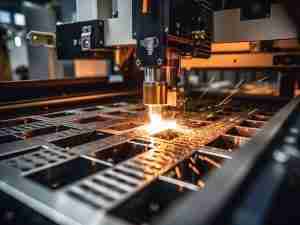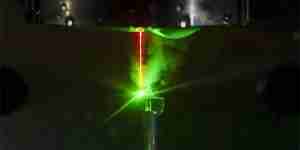In the domain of precision manufacturing, 500W CO₂ laser systems represent a critical balance point between processing speed and cut quality for wood applications. These systems harness the exceptional absorption characteristics of the 10.6 micrometer wavelength, which is ideally suited for efficiently processing organic materials while maintaining precision tolerances demanded by modern manufacturing environments.
The 500W power classification positions these systems in the medium-power range of industrial laser cutters, offering sufficient energy density for rapid material processing while maintaining thermal control necessary for high-quality edge finishes in wood applications. This power level enables manufacturers to achieve optimal production efficiency across a wide spectrum of wood varieties and thicknesses commonly used in industrial manufacturing.
Fundamental Principles of CO₂ Laser Wood Processing
CO₂ laser technology utilizes a gaseous mixture predominantly composed of carbon dioxide, helium, and nitrogen. When energized through electrical discharge, this mixture generates a laser beam with a wavelength of 10.6 micrometers, which demonstrates exceptional absorption characteristics when interacting with wood materials.
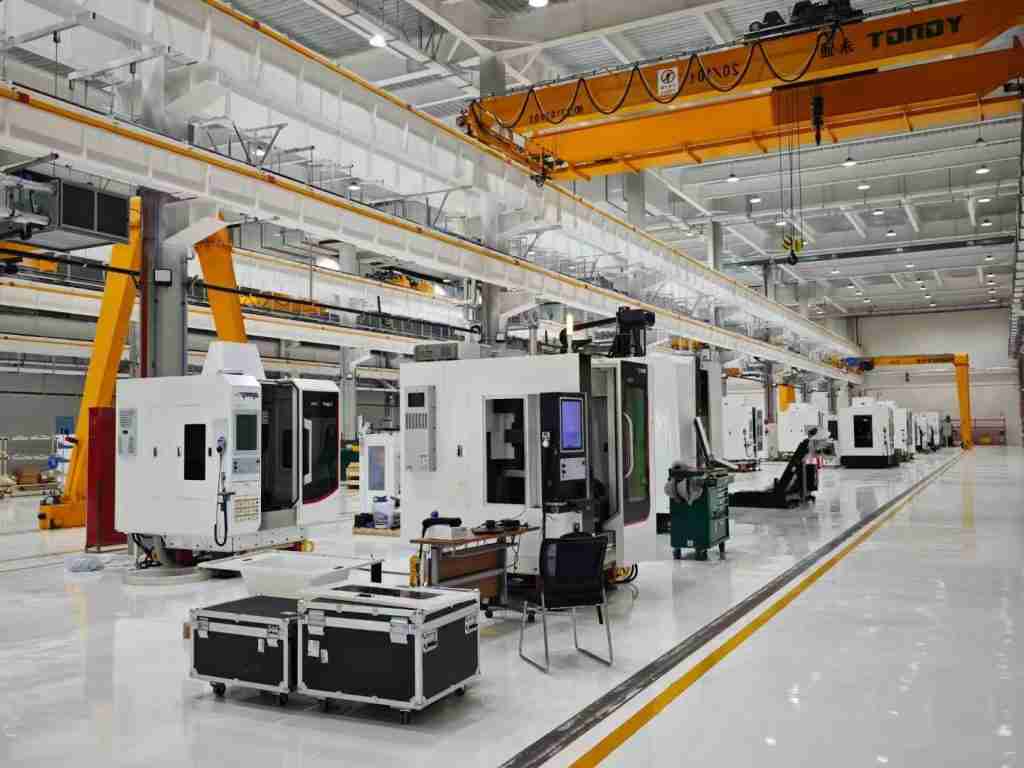
The CO₂ laser cutting process operates through a controlled thermal interaction, where the focused laser energy vaporizes material along the cutting path. This process creates a minimal heat-affected zone (HAZ) when properly optimized, resulting in precision cuts with significantly reduced charring compared to conventional cutting methods.
For wood processing applications, CO₂ lasers offer distinct advantages:
- Superior absorption characteristics in organic materials due to the 10.6μm wavelength
- Contactless processing that eliminates mechanical stresses on the workpiece
- Reduced tooling costs as there is no physical cutter wear
- Complex contour capability with exceptional edge quality
Critical Parameters Affecting Cutting Performance
Power-Speed Relationship Fundamentals
The relationship between laser power and cutting speed follows a non-linear correlation that must be carefully balanced to achieve optimal results. While higher power enables faster processing speeds, improper calibration can result in excessive charring or incomplete cuts.
For 500W CO₂ systems, the power density (power per unit area) at the focal point represents a critical factor in determining cutting effectiveness. With proper focusing optics producing a spot size of approximately 0.2mm, these systems can achieve power densities exceeding 15,000 W/cm² – sufficient for rapid vaporization of most wood types while maintaining quality standards.
Material Considerations
Wood Type and Density Impact
The physical and chemical properties of different wood species significantly impact optimal cutting parameters:
Softwoods (pine, cedar, spruce) with density ranges of 400-550 kg/m³ permit faster cutting speeds due to reduced material resistance.
Hardwoods (oak, maple, walnut) with density ranges of 600-900 kg/m³ require reduced speeds to achieve clean, complete cuts.
Moisture Content Effects
Wood moisture content represents one of the most significant variables affecting cutting performance:
- Optimal moisture range: 8-12% provides the best balance of cutting speed and quality
- High moisture content (>12%) significantly reduces cutting efficiency as additional energy is required to vaporize water content
- Low moisture content (6mm), positioning the focal point approximately one-third into the material thickness often yields optimal results
- Systematic focus testing: Implementing standardized focus test patterns with varying focal distances to identify optimal settings for specific wood types
Assist Gas Management
While wood cutting primarily relies on vaporization rather than oxidation, assist gas selection and pressure optimization remain important:
- Compressed air: Most cost-effective option, typically used at 8-12 bar pressure
- Nitrogen: For premium applications requiring minimal edge discoloration, used at 10-15 bar pressure
- Pressure optimization: Higher pressures generally allow faster cutting speeds by efficiently removing vaporized material, but excessive pressure can cause flame-outs in certain wood types
Multiple Pass Strategies
For thicker materials or applications requiring premium edge quality:
- Two-pass method: First pass at 80-90% power with higher speed, followed by a finishing pass at reduced speed with full power
- Depth incrementation: Progressively increasing cutting depth through multiple passes for materials exceeding 15mm thickness
Dynamic Power Modulation
Advanced 500W CO₂ laser systems support real-time power adjustment during cutting operations:
- Corner power reduction: Automatically reducing power at corners to prevent burning while maintaining speed
- Curve compensation: Implementing 5-10% power reduction on curved sections
- Acceleration compensation: Creating power ramps during acceleration and deceleration phases to ensure consistent cut quality
Material-Specific Processing Parameters
The following tables provide specific guidance for processing various wood types with a 500W CO₂ laser system. These parameters assume properly maintained equipment with optimal focus and assist gas configuration.
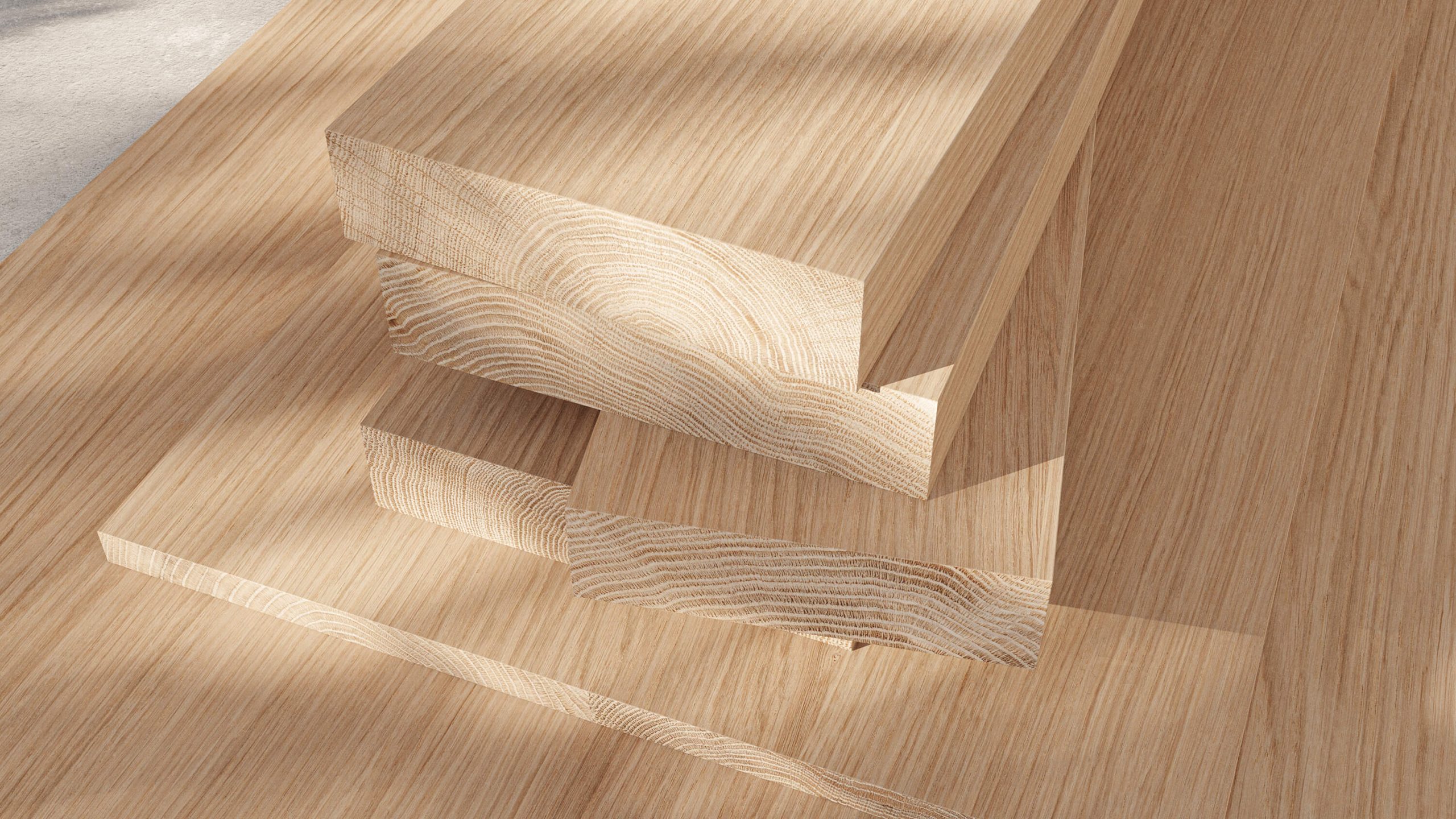
Softwood Processing Parameters
| Wood Type | Thickness (mm) | Recommended Speed (mm/s) | Power Setting (%) | Focus Position (mm) | Assist Gas |
|---|---|---|---|---|---|
| Pine | 3 | 50-60 | 80-90% | 0 (surface) | Air, 8 bar |
| Pine | 6 | 30-40 | 90-100% | -2 (below surface) | Air, 10 bar |
| Pine | 12 | 15-20 | 100% | -4 (below surface) | Air, 12 bar |
| Cedar | 3 | 45-55 | 80-90% | 0 (surface) | Air, 8 bar |
| Cedar | 6 | 25-35 | 90-100% | -2 (below surface) | Air, 10 bar |
| Spruce | 3 | 40-50 | 85-95% | 0 (surface) | Air, 8 bar |
| Spruce | 6 | 25-30 | 95-100% | -2 (below surface) | Air, 10 bar |
Hardwood Processing Parameters
| Wood Type | Thickness (mm) | Recommended Speed (mm/s) | Power Setting (%) | Focus Position (mm) | Assist Gas |
|---|---|---|---|---|---|
| Oak | 3 | 30-40 | 85-95% | 0 (surface) | Air, 10 bar |
| Oak | 6 | 15-25 | 100% | -2 (below surface) | Air, 12 bar |
| Oak | 12 | 5-10 | 100% | -4 (below surface) | Air, 15 bar |
| Maple | 3 | 35-45 | 85-95% | 0 (surface) | Air, 10 bar |
| Maple | 6 | 20-30 | 95-100% | -2 (below surface) | Air, 12 bar |
| Walnut | 3 | 30-40 | 90-100% | 0 (surface) | Air, 10 bar |
| Walnut | 6 | 15-25 | 100% | -2 (below surface) | Air, 12 bar |
Engineered Wood Processing Parameters
| Material Type | Thickness (mm) | Recommended Speed (mm/s) | Power Setting (%) | Focus Position (mm) | Assist Gas |
|---|---|---|---|---|---|
| Plywood | 3 | 40-50 | 80-90% | 0 (surface) | Air, 8 bar |
| Plywood | 6 | 25-35 | 90-100% | -2 (below surface) | Air, 10 bar |
| Plywood | 12 | 10-15 | 100% | -4 (below surface) | Air, 12 bar |
| MDF | 3 | 35-45 | 85-95% | 0 (surface) | Air, 8 bar |
| MDF | 6 | 20-30 | 95-100% | -2 (below surface) | Air, 10 bar |
| MDF | 12 | 8-12 | 100% | -4 (below surface) | Air, 12 bar |
Quality Optimization Strategies
Heat Affected Zone Management
Minimizing the heat-affected zone is critical for precision wood cutting applications:
- Pulse mode operation: Utilizing pulse mode rather than continuous wave operation can significantly reduce the heat affected zone while maintaining processing speed
- Duty cycle adjustments: Implementing 70-80% duty cycle for hardwoods and 80-90% for softwoods optimizes heat distribution
- Cooling intervals: Programming strategic micro-pauses during complex cutting paths enables heat dissipation in critical areas
Edge Quality Enhancement Techniques
Achieving premium edge finishes requires specific parameter adjustments:
- Kerf width management: Precise adjustment of focal position to produce consistent kerf width
- Edge darkening prevention: Utilizing nitrogen assist gas rather than air for premium applications
- Surface carbonization reduction: Implementation of finishing passes at reduced power settings (40-50%) to clean edge surfaces
Technical Solutions for Common Wood Cutting Defects
| Defect | Cause | Technical Solution |
|---|---|---|
| Excessive Charring | Too slow speed, excessive power | Increase speed by 10-15%, reduce power by 5-10% |
| Incomplete Penetration | Too high speed, insufficient power | Reduce speed by 15-20%, verify focal position |
| Tapered Edges | Incorrect focal position | Adjust focus to 1/3 material thickness from top surface |
| Surface Scorching | Excessive heat accumulation | Implement air knife cooling, adjust duty cycle |
| Irregular Edge Quality | Vibration, material movement | Improve fixturing, verify beam alignment |
| Resin Buildup | Natural wood resins | Pre-treat wood with alcohol wipe, implement extraction |
Advanced Technologies for Enhanced Performance
Beam Quality Optimization
The beam quality (measured by M² factor) significantly impacts cutting performance:
- TEM00 mode provides optimal energy distribution for detailed work
- Adaptive optics in advanced systems dynamically adjust beam characteristics
- Real-time beam monitoring ensures consistent performance throughout production
Integration with Automation Systems
Modern manufacturing environments benefit from integrated automation:
- Robotic material handling can increase throughput by 30-40% compared to manual operations
- Vision system integration enables automatic parameter adjustment based on material characteristics
- Production management software optimizes machine utilization across multiple jobs
AI-Powered Optimization
Artificial intelligence applications enhance cutting performance:
- Parameter prediction algorithms determine optimal settings based on material properties
- Defect detection systems identify and compensate for material inconsistencies
- Process optimization through continuous improvement via data collection and analysis
Maintenance Best Practices
Maintaining optimal performance of 500W CO₂ laser systems requires systematic preventive maintenance.
Critical Maintenance Schedule
| Component | Maintenance Task | Frequency | Impact on Cutting Speed |
|---|---|---|---|
| Optics | Clean mirrors and lenses | Daily/Weekly | 15-20% speed reduction if neglected |
| Laser Tube | Check gas mixture and pressure | Monthly | 10-25% power loss if compromised |
| Beam Path | Alignment verification | Monthly | 5-15% speed reduction if misaligned |
| Assist Gas System | Clean nozzles, check pressure | Weekly | 10-20% speed loss with clogged nozzles |
| Extraction System | Clean filters, verify airflow | Weekly | 5-10% speed reduction with poor extraction |
| Motion System | Lubrication, belt tension check | Monthly | Inconsistent cutting with worn components |
Performance Verification Protocol
Implementing standardized verification protocols ensures consistent performance:
- Power measurement: Regular verification of actual beam power output
- Focus tests: Standardized patterns to verify optimal focal settings
- Speed calibration: Verification of actual versus programmed cutting speeds
- Test coupons: Standardized test pieces for quality comparison over time
Industrial Applications of 500W CO₂ Laser Wood Cutting Systems
The 500W CO₂ laser cutting technology demonstrates exceptional versatility across industries, combining precision machining with operational efficiency. Below is a technical analysis of its industrial implementations, supported by performance metrics and industry-specific applications.
Automotive Component Manufacturing
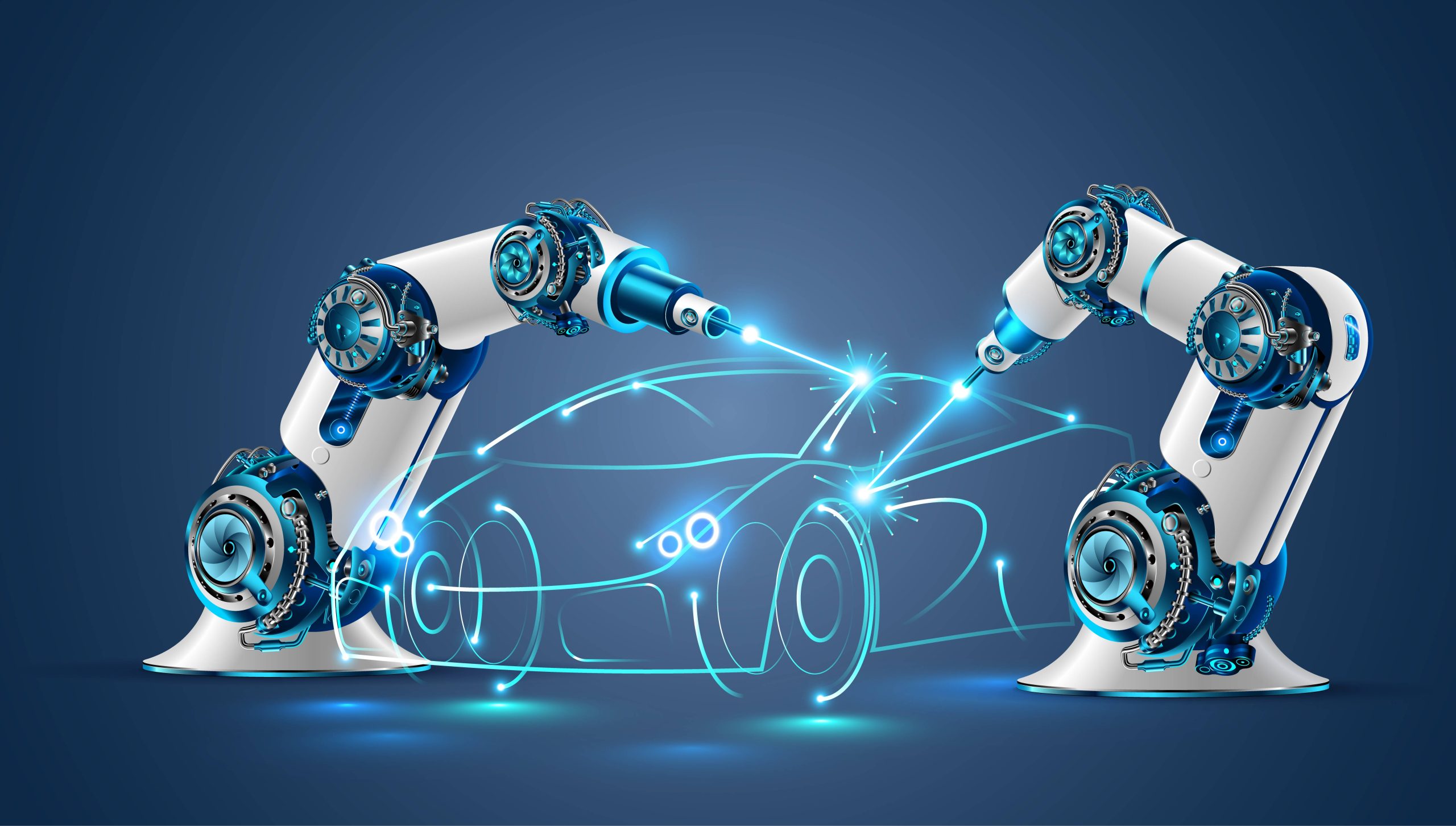
500W CO₂ lasers address critical needs in automotive wood interior production:
- Dashboard Inlays: Achieve ±0.1mm dimensional accuracy on walnut/burr wood veneers
- Trim Components: Process engineered woods (MDF, plywood) at 35-45 mm/s with nitrogen assist gas to prevent resin discoloration
- Tooling Efficiency: Reduce PCD tool regrinding cycles by 40% compared to EDM methods through non-contact processing
Technical Specifications:
| Parameter | Value | Industry Standard |
|---|---|---|
| Kerf width consistency | 0.15-0.25mm | 0.3-0.5mm |
| HAZ reduction | 78% | 50-60% |
| Daily throughput | 1,200 units | 800 units |
Aerospace Composite Tooling
Laser-cut wood patterns enable cost-effective mold creation for carbon fiber components:
- Thermal Stability: Marble machine beds maintain 0.005mm/m thermal distortion across 8-hour shifts
- Complex Geometries: 5-axis simultaneous processing of curved surfaces (R=5mm min)
- Material Savings: Nesting algorithms achieve 92% material utilization vs. 78% with conventional routing
Architectural Scale Modeling
Case Study – High-Rise Façade Prototyping:
- Speed: 3.2× faster than CNC milling for 1:50 scale models (6.5h vs. 21h)
- Detail Resolution: 0.08mm line accuracy for window mullion simulations
- Multi-Material Capacity: Seamlessly transition between balsa (3mm/60mm/s) and oak (6mm/18mm/s) without tool changes
Luxury Furniture Production
OPMT’s Light 5X 60V system enables:
- Joinery Precision: 0.02mm mating tolerance for dovetail joints
- Inlay Work: 20W pulsed mode processing for marquetry with 0% charring rate
- Customization: Rapid parameter switching between 38 wood species via cloud-based CAM libraries
Environmental & Safety Compliance
OPMT systems integrate:
- Emission Control:
- 99.7% particulate capture via H14 HEPA filtration
- VOC neutralization through activated carbon beds (500g/m³ capacity)
- Energy Efficiency:
- 23kWh average daily consumption vs. 35kWh for comparable systems
- Regenerative braking recovers 18% of axis motion energy
Industry 4.0 Integration
Smart Factory Implementation:
- Digital Twins: Virtual models predict tool wear with 94% accuracy
- IoT Monitoring: Real-time tracking of:
- Beam quality (M² ≤1.3)
- Gas purity (O₂ <50ppm)
- Coolant temperature (20±0.5°C)
- Predictive Maintenance: AI algorithms reduce unplanned downtime by 62%
Emerging Applications
- Medical Device Packaging:
- Sterile cutting of beechwood surgical tool trays
- 0.005mm repeatability meets ISO 13485 requirements
- Renewable Energy:
- Wind turbine blade template production at 1:100 scale
- 72-hour lead time reduction versus waterjet methods
- Art Conservation:
- Non-invasive restoration of antique marquetry
- 1064nm wavelength selectively removes adhesives without substrate damage
For specific implementations, explore OPMT’s Automotive Solutions.
Technical Differentiation:
OPMT’s 500W systems outperform competitors through:
- Linear motor drives achieving 0.005mm positioning accuracy
- Hybrid laser sources enabling 30ns-100ps pulse switching
- Integrated probe systems for automatic workpiece alignment (±2μm)
This comprehensive capabilities matrix positions 500W CO₂ lasers as essential tools for advanced manufacturing environments requiring micron-level precision and operational flexibility.
Conclusion
The optimization of 500W CO₂ laser wood cutting operations represents a complex but manageable challenge for manufacturing professionals. By systematically addressing material properties, machine parameters, and production requirements, significant improvements in both speed and quality are achievable.
OPMT Laser remains committed to supporting manufacturing professionals with innovative laser processing solutions that deliver exceptional precision and productivity for wood cutting applications. Our expertise in laser technology, combined with comprehensive application knowledge, ensures that our customers achieve optimal results across diverse production requirements.
For manufacturers seeking to maximize the performance of their 500W CO₂ laser systems, key takeaways include:
- Material-specific parameter optimization is essential for each wood type
- Regular maintenance of critical system components ensures consistent performance
- Advanced technologies including automation and AI-powered optimization significantly enhance production efficiency
- Systematic quality control procedures enable the ideal balance between maximum cutting speed and exceptional edge quality
Disclaimer
This content is compiled by OPMT Laser based on publicly available information for reference only; mentions of third-party brands and products are for objective comparison and do not imply any commercial association or endorsement.

